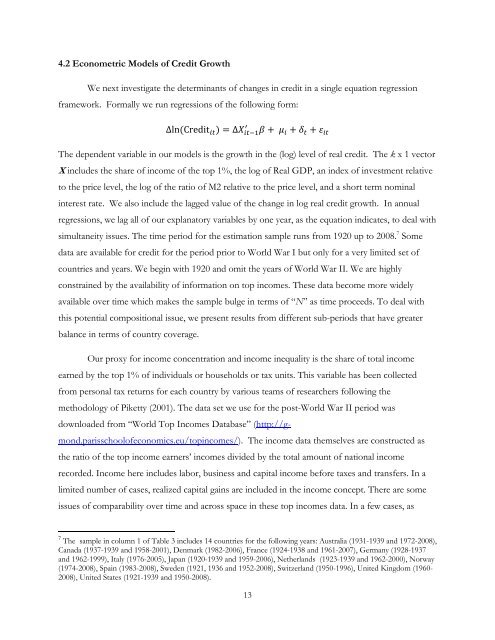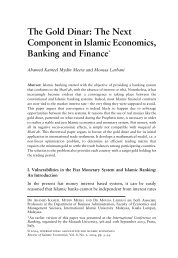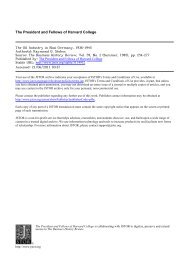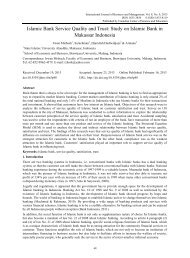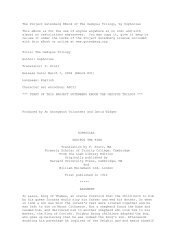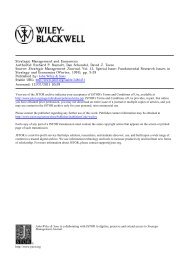Michael D. Bordo Christopher M. Meissner Working Paper 178
Michael D. Bordo Christopher M. Meissner Working Paper 178
Michael D. Bordo Christopher M. Meissner Working Paper 178
Create successful ePaper yourself
Turn your PDF publications into a flip-book with our unique Google optimized e-Paper software.
4.2 Econometric Models of Credit Growth<br />
We next investigate the determinants of changes in credit in a single equation regression<br />
framework. Formally we run regressions of the following form:<br />
� Δln�Credit��� �Δ������� �� ��� ���� The dependent variable in our models is the growth in the (log) level of real credit. The k x 1 vector<br />
X includes the share of income of the top 1%, the log of Real GDP, an index of investment relative<br />
to the price level, the log of the ratio of M2 relative to the price level, and a short term nominal<br />
interest rate. We also include the lagged value of the change in log real credit growth. In annual<br />
regressions, we lag all of our explanatory variables by one year, as the equation indicates, to deal with<br />
simultaneity issues. The time period for the estimation sample runs from 1920 up to 2008. 7 Some<br />
data are available for credit for the period prior to World War I but only for a very limited set of<br />
countries and years. We begin with 1920 and omit the years of World War II. We are highly<br />
constrained by the availability of information on top incomes. These data become more widely<br />
available over time which makes the sample bulge in terms of “N” as time proceeds. To deal with<br />
this potential compositional issue, we present results from different sub-periods that have greater<br />
balance in terms of country coverage.<br />
Our proxy for income concentration and income inequality is the share of total income<br />
earned by the top 1% of individuals or households or tax units. This variable has been collected<br />
from personal tax returns for each country by various teams of researchers following the<br />
methodology of Piketty (2001). The data set we use for the post-World War II period was<br />
downloaded from “World Top Incomes Database” (http://gmond.parisschoolofeconomics.eu/topincomes/).<br />
The income data themselves are constructed as<br />
the ratio of the top income earners’ incomes divided by the total amount of national income<br />
recorded. Income here includes labor, business and capital income before taxes and transfers. In a<br />
limited number of cases, realized capital gains are included in the income concept. There are some<br />
issues of comparability over time and across space in these top incomes data. In a few cases, as<br />
7 The sample in column 1 of Table 3 includes 14 countries for the following years: Australia (1931-1939 and 1972-2008),<br />
Canada (1937-1939 and 1958-2001), Denmark (1982-2006), France (1924-1938 and 1961-2007), Germany (1928-1937<br />
and 1962-1999), Italy (1976-2005), Japan (1920-1939 and 1959-2006), Netherlands (1923-1939 and 1962-2000), Norway<br />
(1974-2008), Spain (1983-2008), Sweden (1921, 1936 and 1952-2008), Switzerland (1950-1996), United Kingdom (1960-<br />
2008), United States (1921-1939 and 1950-2008).<br />
13


